Cheap ✨ Empire Guitars Disaster Area Designs DPC-5 Gen3 *Free Shipping In The USA* 🔥
$399.99 Original price was: $399.99.$95.99Current price is: $95.99.
- Online customer care, always here for you.
- The quality solution for all your needs.
- Shop with Confidence
- The best quality products, always.

Yes. It’s back. Our original pedalboard controller, now with way more cool stuff.
The DPC-5 was our first foray into the loop-switching field way back
in 2012. We discontinued it in early 2016 when some of the parts
required to build them became too expensive. We’ve been hard at work
bringing the DMC Gen3 series to life, but we never forgot about the
DPC-5!
What does it do? The DPC-5 is a compact MIDI
controller and loop switcher. It’s designed to control a mix of MIDI
and non-MIDI pedals in your rig, allowing you to craft presets that you
can engage instantly when you need them. A single tap on your DPC-5 can
turn up to five non-MIDI pedals on or off, send tap tempo to a delay or
other device, change the channel on your amplifier, and switch programs
on up to four MIDI devices. That’s a lot of power in a small
footprint!
— What’s New in Gen3 —
New Custom Colors – We’ve added some new finishes to
our standard Black Texture and Ghost White: Red Clay Texture, Illusion
Orange Sparkle, Illusion Green Sparkle, Illusion Blue Sparkle, and the
limited edition Infra Red and Ultra Violet finishes!
More MIDI Control – Control up to four MIDI devices
plus any combination of Disaster Area pedalboard switching systems.
Connect a DPC-8EZ as a MIDI slave for a 13-loop controller!
Preset Naming Capability – Each user bank and preset
may be named. This allows you to name a bank with a song title, and
each preset with a section name (verse, chorus, solo, etc.)
Improved LED Indication and Display – The original
DPC-5 had LEDs for each preset plus a multi-function cluster of LEDs to
indicate various functions. We’ve changed those LEDs to indicate the
status of each loop, the control outputs, and the buffer / mute status.
We’ve also added our trademark blue LED display, with full alphanumeric
capabilities! Both display and LEDs may be dimmed or brightened in the
setup menu to suit indoor or outdoor venues.
Silent Loop Switching – We’ve changed over the older
mechanical relay bypass on the original DPC-5 to the quiet and reliable
solid-state relay system from our popular DPC-8EZ. The DPC-5 now uses
less power and switches with even less noise than before. We’ve added
the user-selectable Automatic Noise Reduction from the 8EZ as well,
allowing you to mute the controller briefly during switching to silence
troublesome pedals.
Improved Audio Path and Buffers – We now run the audio path on its own power supply to improve headroom and reduce noise.
Built-in SMARTClock – The DPC-5 Gen3 adds in support
for sending MIDI Clock or tap tempo to your connected devices, without
any additional hardware. The MultiJack connector can operate as an
expression pedal inputs, tap tempo footswitch inputs, MIDI outputs, or
isolated tap tempo outputs. The DPC-5 Gen3 can send either a global
tempo / BPM for all presets, or a new tempo / BPM for each preset.
Built-in SMARTSwitch – The DPC-5 has an isolated TRS
(tip-ring-sleeve) jack that may be used for amplifier channel, tremolo,
reverb, or other switching functions. Connect it to your Red Remote
compatible JHS pedals to have preset control over their switching
functions, or control the Favorite settings on your Strymon pedald
(requires the .) Or just use this jack to add TWO separate tap tempo outputs to the built-in SMARTClock!
Optional gHOST Compatiblity – The DPC-5 Gen3 can
control an external USB-MIDI device including the popular Zoom MS-50G,
MS-60B, and MS-70CDR using its native USB port. Connect your USB-MIDI
device to theDPC-5 Gen3 USB port through our gHOST adaptor, enable the
USB Host mode in the firmware and you’re all set! TheDPC-5 Gen3 can
power most USB-MIDI devices, but please note that the power supply
you’re using must be sufficient to power the DPC plus the connected
device. Powering a USB device may require as much as 500mA, so be sure
your power supply can handle the load.
Separate Expression and Roller Configuration –
hundreds of players all over the world are in love with the expression
rollers on their DMC and DPC Gen2 controllers. It’s a great way to add
expression control without giving up valuable pedalboard real estate.
The DPC-5 Gen3 allows you to map the roller to a variety of
destinations.
MultiJack – we’ve brought the MultiJack over from
the SMARTClock, but we’ve taught it some new tricks! The MultiJack can
function as an expression pedal input, tap tempo footswitch input, or
additional MIDI output by connecting the . You can use our to
connect your Tonal Recall, Warped Vinyl or other Chase Bliss pedal for
full MIDI control. Want more? Flip the DIP switches inside the pedal
and the MultiJack can act as an isolated tap tempo output to your
non-MIDI gear. Any of the pedals listed over on the TNT or SMARTClock
pages can be controlled by the MultiJack. The MultiJack also supports
selectable tap tempo subdivisions, so you can tap in quarter notes and
have your delay set to dotted eighths.
MIDI Input and Output – the 5-pin MIDI jack on theDPC-5 operates as a MIDI output, of course, but if you connect the ,
you can also send MIDI in to the DPC-5 Gen3. Want to connect your old
DMC Gen2 to your brand new Gen3? No problem! How about sending MIDI
clock into your chain from a drum machine? Sure, that’ll work.
Easy Firmware Update – no more driver installation,
app downloads, or weird Windows errors! Simply hold the bank up /
save button and plug in your DPC, and it shows up on your desktop as a
flash drive. Drag and drop the new firmware over and you’re all set!
(Mac folks will have to type three keystrokes, but you can handle
that!) And our new 32-bit processor has more than eight times the
available power of the Gen2 family. We’ll be adding support for more
devices and more features as you request them!
— What can the DPC-5 Gen3 do for me? —
We’re glad you asked! If you have one MIDI device, the DPC-5 Gen3
can simplify selecting programs, send it expression or tap tempo, or
even keep it locked in to a MIDI clock. We can also control the loop
recorder / looper on several popular devices such as the Strymon
Timeline, Eventide H9, and Line 6 M9 / M13. Unlike the DMC-3XL and
DMC-4 Gen3, the looper mode doesn’t occupy one of the device slots, so
you can still get full control even with the looper mode enabled.
As helpful as the DPC-5 Gen3 is for single device users, it really
shines when used with multiple pedals. Instead of scrolling around on
each device to select a program for your next song, the DMC can send
simultaneous commands to all of your pedals to select the exact patches
you want with a single tap! Using our Preset Mode, changing sounds on
all of your MIDI pedals is as easy as changing the channel on your TV
remote. The DPC-5Gen3 can control up to four separate devices.
And by adding our new Clock Mode, we’ve taken pedalboard control to a
new level! You can select your tempo by BPM, or tap in a new tempo any
time. The DPC-5 Gen3 allows for a global tempo that you can tap in at
any time, or preset tempos that change along with your MIDI programs.
You can even configure the MultiJack to send taps to your non-MIDI
devices with tap tempo inputs.
— What do I need to hook all this stuff up? —
Wiring up your rig with a loop switcher like the DPC-5 Gen3 is a bit
different than a traditional setup. Instead of connecting the output of
your first pedal to the input of your second pedal, you have to connect
each pedal in your chain to its own loop on the DPC-5 Gen3. You’ll
need two cables per pedal that you want to connect, so that means ten
cables to connect five pedals to the DPC-5. We recommend our
cable kits due the tight spacing on the jack panel, but George L’s and
Lava solderless plugs also work. If you prefer to use soldered plugs,
we recommend Switchcraft 280 short-handle straight plugs.
You’ll also need one
for each device you want to connect to the DPC-5 Gen3. MIDI is a
communication protocol, and a single MIDI cable is capable of sending
data to up to 16 different places on separate MIDI channels.
If you want to connect multiple MIDI devices together, you can
generally hook the output of the first device (like the DPC) into the
input of the second device, then the output of the second device runs
into the input of the third device and so on.
Exceptions to this rule include any device that does not have a MIDI output or thru connector (dead-end device)
- Alexander Super Radical and Oblivion
- Digitech Whammy 4, 5, DT, Bass Whammy
- Pigtronix Infinity
- EHX 8-Step Program
Also, some devices that have a MIDI output do not pass incoming MIDI
to it – the big offenders here are the Line 6 M5, M9, and M13.
Some devices have a MIDI output / thru but may not reliably pass
incoming MIDI data – The Eventide Factor series and H9 are like this.
If you have these problematic devices, you can either place them LAST
in your MIDI chain, or you can use a MIDI Thru box such as the Disaster
Area PBA-MS which will send full MIDI to three separate devices without
daisy-chaining them.
The DPC-5 Gen3 also provides an additional option, by using the in
its MultiJacks. If you’re not using the MultiJacks for another
purpose, this can get you one additional MIDI output per jack for a
dead-end device, and it supports an additional daisy-chain. In this
way, you can have four dead-end devices in your setup, each at the end
of its own chain.
You can use a Chase Bliss MIDIBox to connect up to 4 Chase Bliss Audio or Empress devices. Chase Bliss pedals use the ring terminal on their jack, so you’ll need to make sure that your MIDIBox is set to the CBA mode. If you prefer not to use the MIDIBox,
you can just connect directly to the MultiJacks with the appropriate
cables. Empress use a standard mono cable, Chase Bliss need the . We can control one Chase Bliss or Empress devices from the MultiJack, plus another using a (5-pin to Chase Bliss version).
— Supported MIDI Devices —
Full MIDI Control Support for the following devices:
Strymon: Timeline, Mobius, BigSky
Eventide: H9, Space, Timefactor, Modfactor, Pitchfactor
Line 6: M5, M9, M13
Chase Bliss: Warped Vinyl, Wombtone, Gravitas, Spectre, Tonal
Recall, Ayahuasca (control up to 4 with an Empress MIDIBox, control up
to three pedal with our and the MultiJacks)
Boss: DD-500 (full support,) SL-20 (clock only)
Electro-Harmonix HOG2
Pigtronix Echolution 2 / Deluxe / Ultra
Alexander: Super Radical, Oblivion
Panda Audio Future Impact I
Empress: Reverb, Tremolo 2 (control
up to four Empress devices using Empress MIDIBox, control a single pedal
with a mono cable connected to the MultiJack)
Free The Tone: Flight Time Delay FT-1Y
Source Audio Neuro Hub / Soundblox Hub: control up to five One
Series or Soundblox 2 series pedals from a single MIDI channel. Control
up to 30 (yes, thirty!) Source Audio pedals with a single DPC-5 Gen3!
Source Audio Nemesis Delay (MIDI direct, no Hub required)
DigiTech: Whammy V, Bass Whammy (newest version) – works with Classic or Chords modes.
General MIDI: Supports most MIDI devices, sends program changes
0-127 and MIDI CC for tap tempo, expression, and performance switch
controls.
MIDI Notes: Control Ableton Live or other DAW software by sending MIDI note messages
Atomic AmpliFIRE
— Features and Specs —
- Sturdy cast aluminum enclosure
- Enclosure Dimensions 10″ x 2.5″ x 2.0″
- Soft-touch footswitches
- Blue LED display with 10 brightness levels
- 5-pin MIDI port, doubles as MIDI input using the Disaster Area MIDI Y-Cable
- 9vDC power jack, 100mA max (up to 500mA if powering a USB device as host)
- USB port with USB-MIDI functionality or USB Host compatibility
- Five effects loops with optional noise-cancelling mute circuitry
- High-quality bypassable buffer allows Loop 1 to be used even for impedance-sensitive devices like vintage fuzzes
- Isolated TRS ouputs for amplifier or remote switching
- Always-on tuner output jack with mute capability
- 1/4″ jack for expression pedal or tap tempo switch
- MultiJack functions as expression pedal input, tap tempo input, tap tempo output, or MIDI output with , control an Empress or Chase Bliss device with the
- Optional side roller assignable to expression or looper level, or user-defined MIDI CC message
Be the first to review “Cheap ✨ Empire Guitars Disaster Area Designs DPC-5 Gen3 *Free Shipping In The USA* 🔥” Cancel reply
Related products
Disaster Area Designs
Cheap 🎉 Empire Guitars Effects Disaster Area Designs Micro Ghost *Free Shipping In The USA* 🔥
Effects
Discount ✨ Spaceman Effects Redstone: Germanium Preamp Teal Ridge *Free Shipping In The USA* 🎁
Effects
Discount ✨ Empire Guitars Greer Southland Harmonic Overdrive *Free Shipping In The USA* Effects 🥰
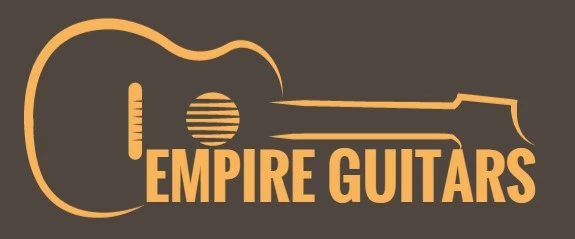
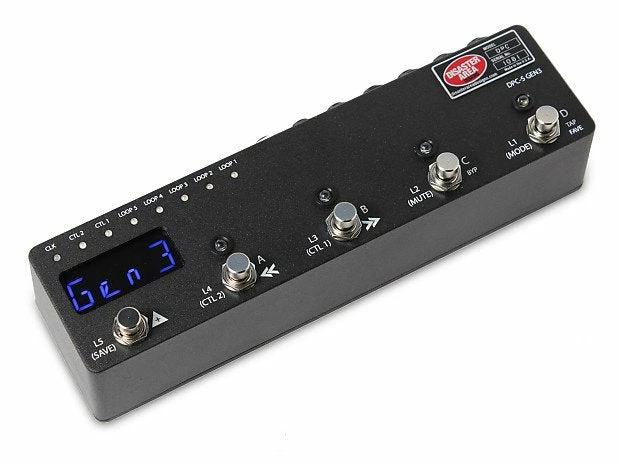
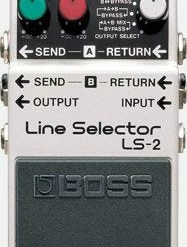
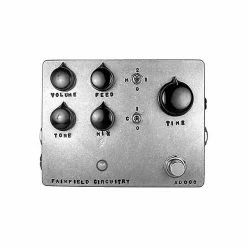
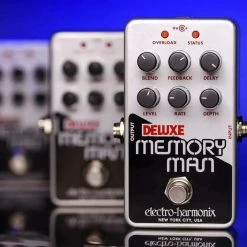
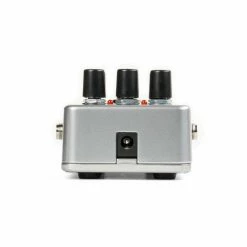
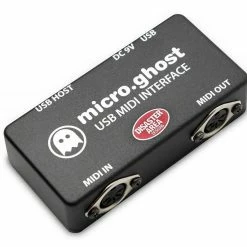


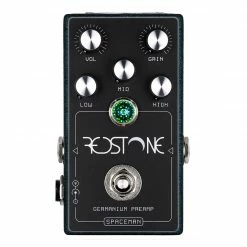
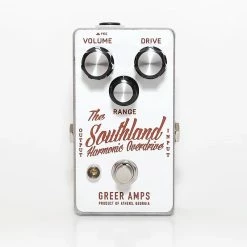
Reviews
There are no reviews yet.